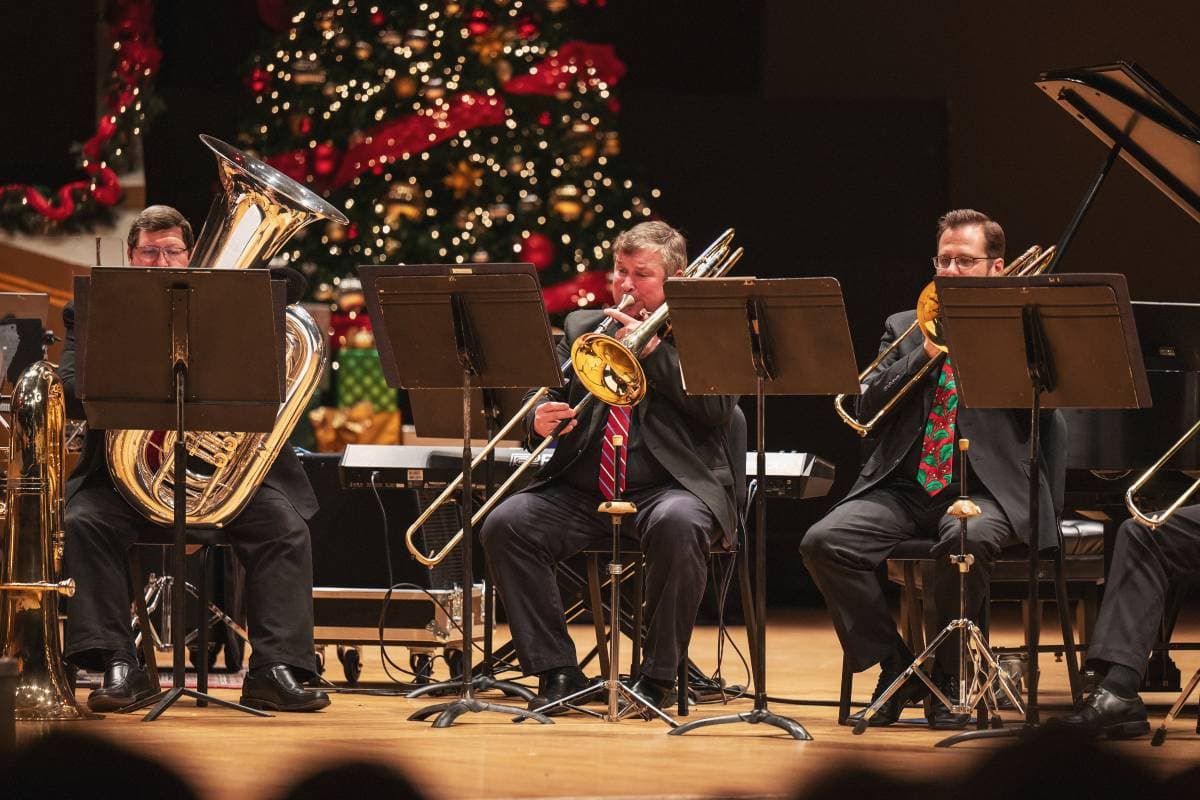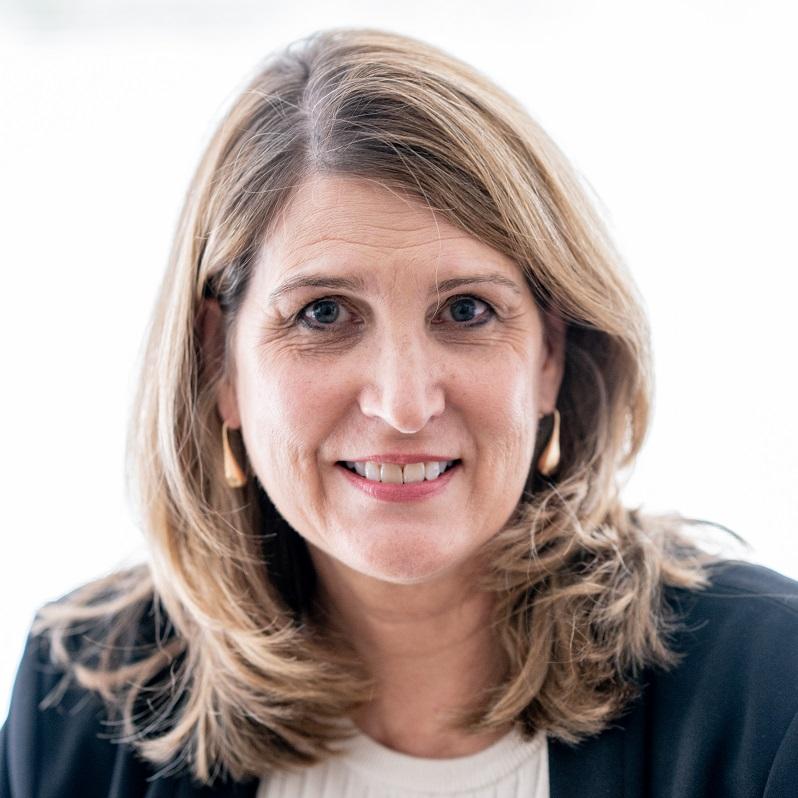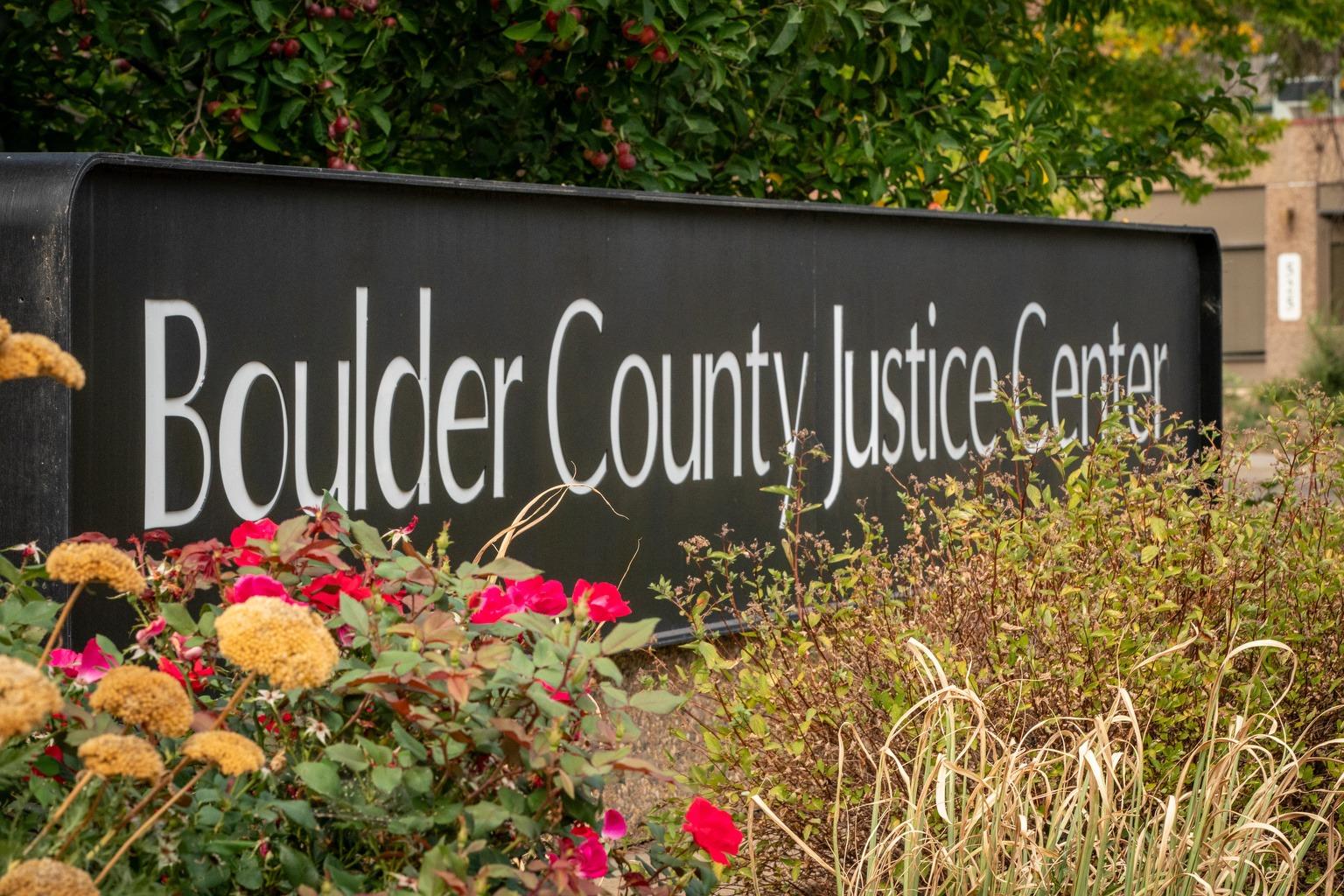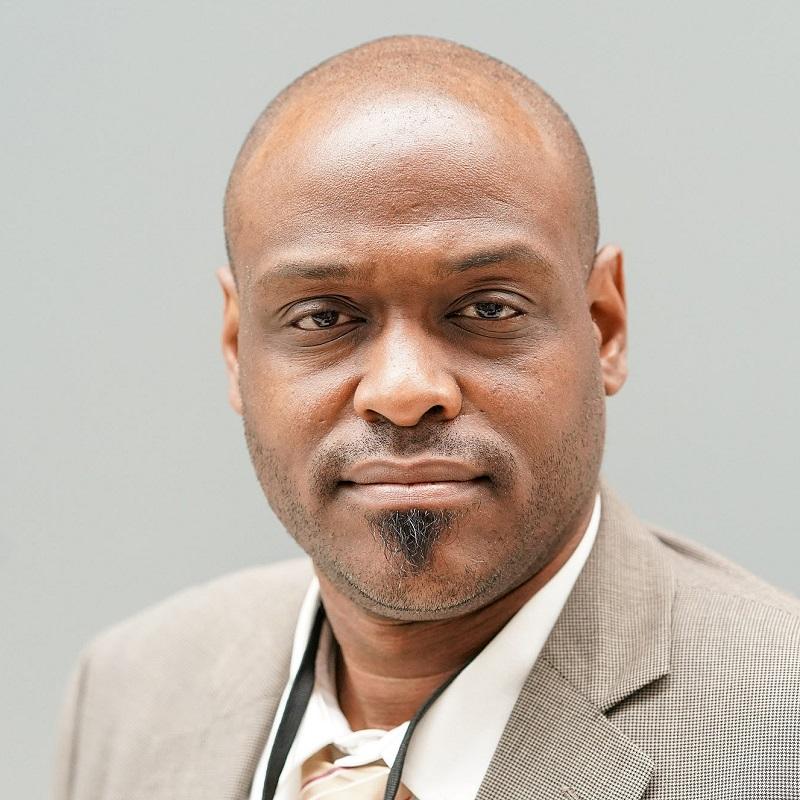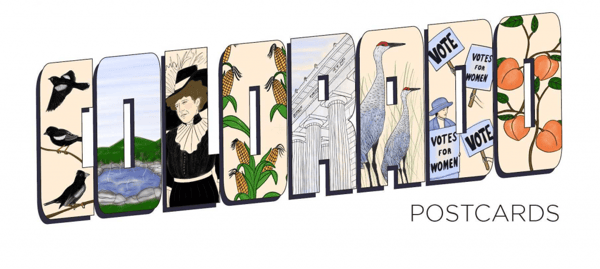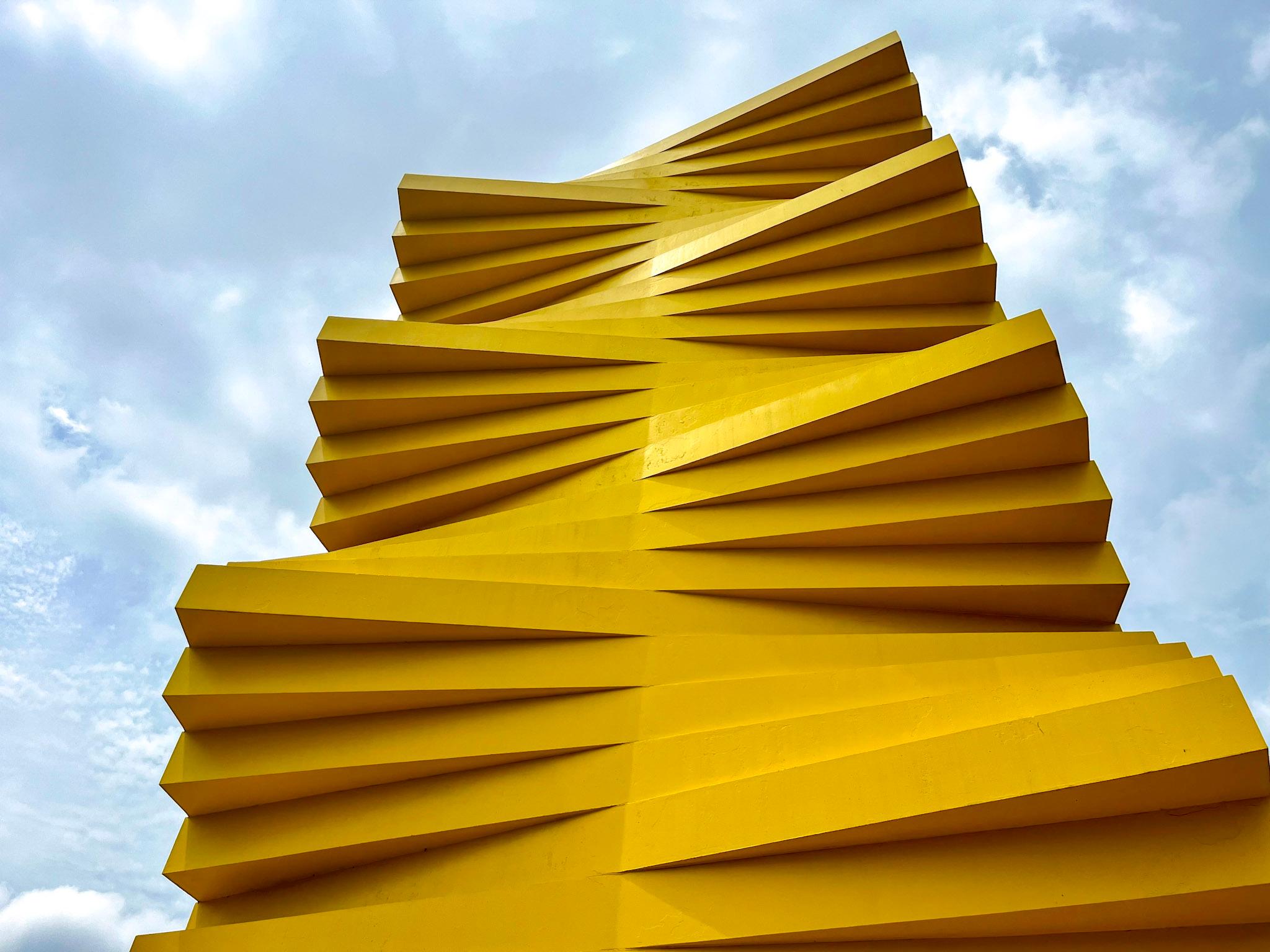
Bauhaus, the highly influential German art movement that helped to redefine modern art and design, has deep roots in Aspen, Colo.
Herbert Bayer, a renowned Bauhaus artist, moved to Aspen in 1945 when industrialist Walter Paepcke summoned him with a grand vision of turning the then-defunct mining town into America’s first European-style ski village.
Bayer lived and worked in Aspen for nearly 30 years. In 1985, the year of his death, he finished his final work — Denver’s iconic “Articulated Wall.”
Though he had sculptures in cities around the world, he was better known for his painting and graphic art. Much of his work is now stored at the Denver Art Museum and in the Denver Public Library’s Western History archive.
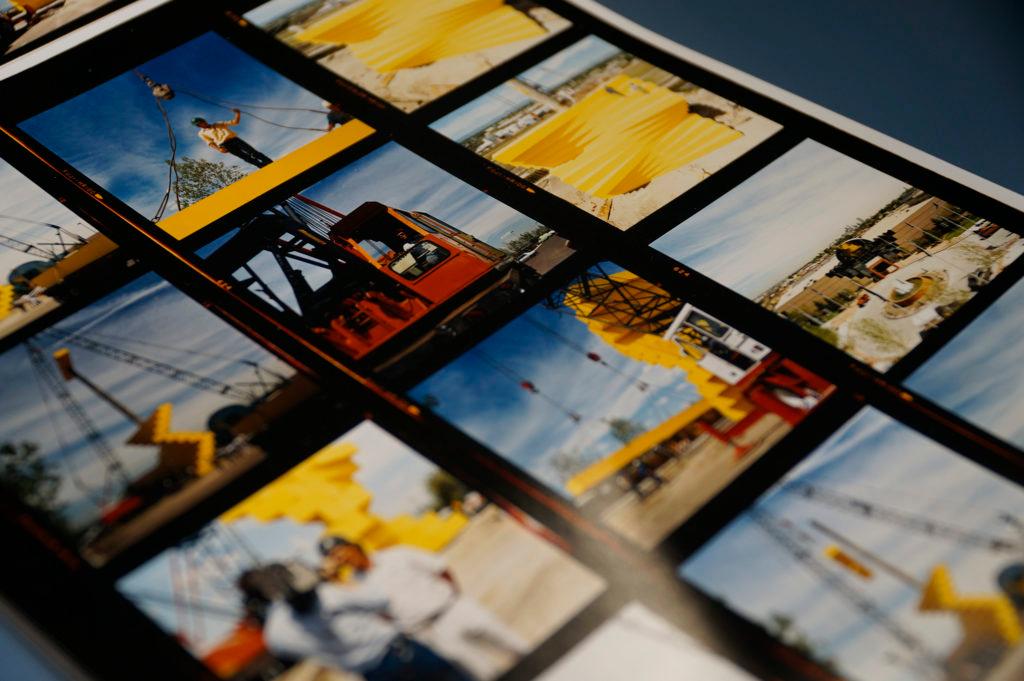
But the Resnick Center for Herbert Bayer Studies in Aspen is the only museum dedicated solely to his life and legacy. In the center’s new exhibition, “Sculpting the Environment,” his three-dimensional process comes to life in the first-ever exhibition dedicated to his site-specific outdoor sculptures and land art.
What is Bauhaus, and how did it end up in Aspen?
“The Bauhaus was kind of the first modern art school,” said Koko Bayer, a Denver-based artist and Herbert Bayer’s step-granddaughter.
“[Instructors] would bring in a bunch of found material, wooden stuff, and be like, ‘Oh, you need to make a sculpture with this.’ Or they would do these exercises with paper where they would give each of the students a sheet of paper and would be like, ‘You need to make a three-dimensional object with this, but you can't use any glue or mechanical fasteners.’”
The Bauhaus motto was “form follows function.”
“The Bauhaus kind of sums up this moment in time where they were really trying to create a new kind of art that was art for the machine age,” Bayer said.
The Bauhaus movement started in 1919 and lasted until 1933, when it was crushed by Hitler’s regime.
“A lot of [Bauhaus] artists were put on his degenerate artists list and left the country,” Bayer said.
That included her step-grandfather, Herbert Bayer, who relocated to New York and established himself as a successful graphic designer. But he never loved life in the city
“He had grown up in the Austrian Alps and was an avid skier and a hiker and really loved the outdoors,” Bayer said.
So when Walter Paepcke called and asked Herbert Bayer to be the head of design for his ski town project, Herbert Bayer was eager to oblige.

Five years after he moved to Aspen, in 1950, the Aspen Institute was founded as a think tank for leaders across the arts and sciences.
“It has been really important in Colorado's history and Colorado's influence on the rest of the world,” Bayer said, “because the people who have come through [The Aspen Institute] and been influenced by it is just who's who of influencers.”
One such influencer is Steve Jobs.
Bayer said Jobs attended a design conference at the Aspen Institute, after which he completely redesigned the Apple aesthetic. No more colorful iMacs circa the late ‘90s. He shifted to an entirely new, streamlined look with monochromatic tones and flat edges.
“A lot of people had contact with these Bauhaus ideas through Herbert's work,” Bayer said.
“There's just a lot of cool stuff that no one has ever seen before.”
“He was a multidisciplinary artist,” Koko Bayer said of her step-grandfather. “He was foremost a painter, but also a graphic designer, sculptor, an architect, landscape sculptor. He pretty much did everything.”
But for the current exhibition in Aspen, Koko Bayer and co-curator Adam Thomas wanted to focus on his site-specific outdoor sculptures and land art.
“Thomas and I really worked hard to find things that would help tell this story of his environmental art,” Bayer said.
At the exhibition, visitors can see drawings and models of Bayer’s works, then step outside on the campus of the Aspen Institute in Aspen, or visit the Design District in Denver, to see finished works in place.
But the greatest repository of his work is the campus of the Aspen Institute in Aspen.
"It features multiple works," Bayer said. "Most notably these two pieces — 'Grass Mound,' which is considered to be the first modern earthwork, and then adjacent to it is a piece called 'Marble Garden,' which is this environment that's built out of pieces of scrap marble that were cast aside at the Marble Quarry and Marble Colorado."
Just adjacent to that is Anderson Park, one of Bayer's environmental sculptures.
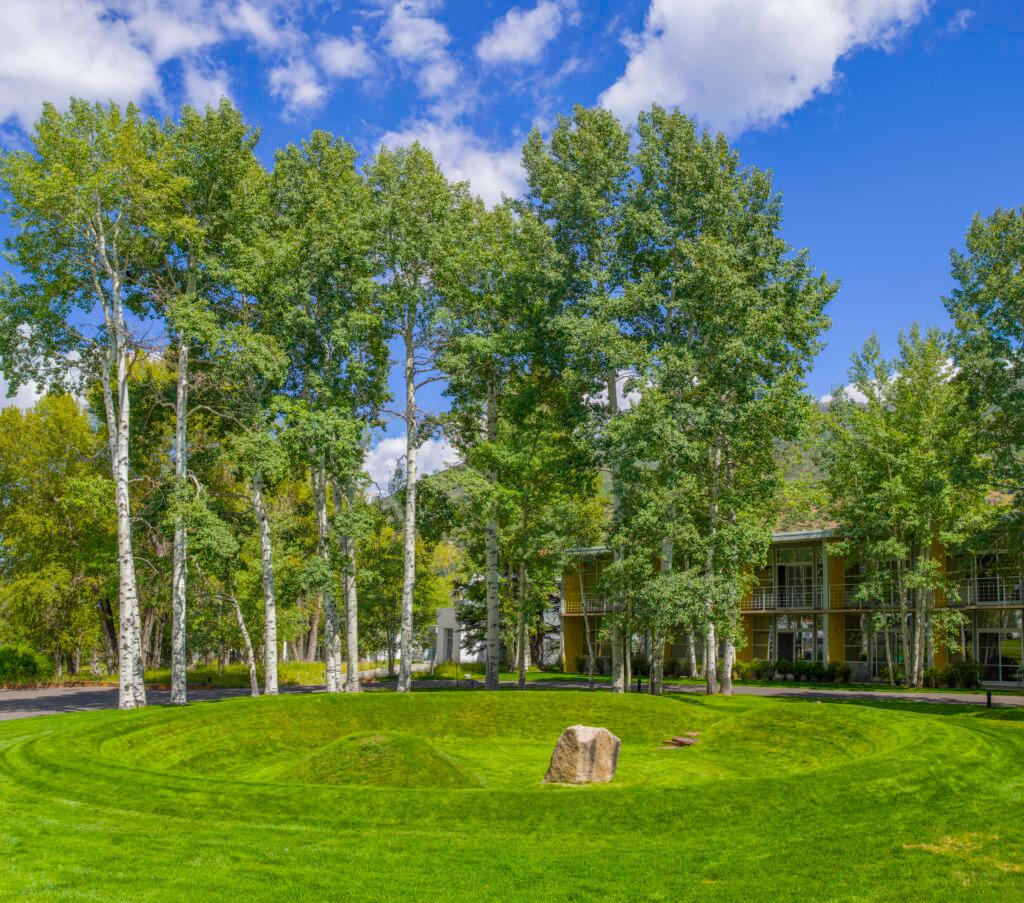
Herbert Bayer's "Grass Mound" (1955), installed at the Aspen Institute's Aspen Meadows campus. 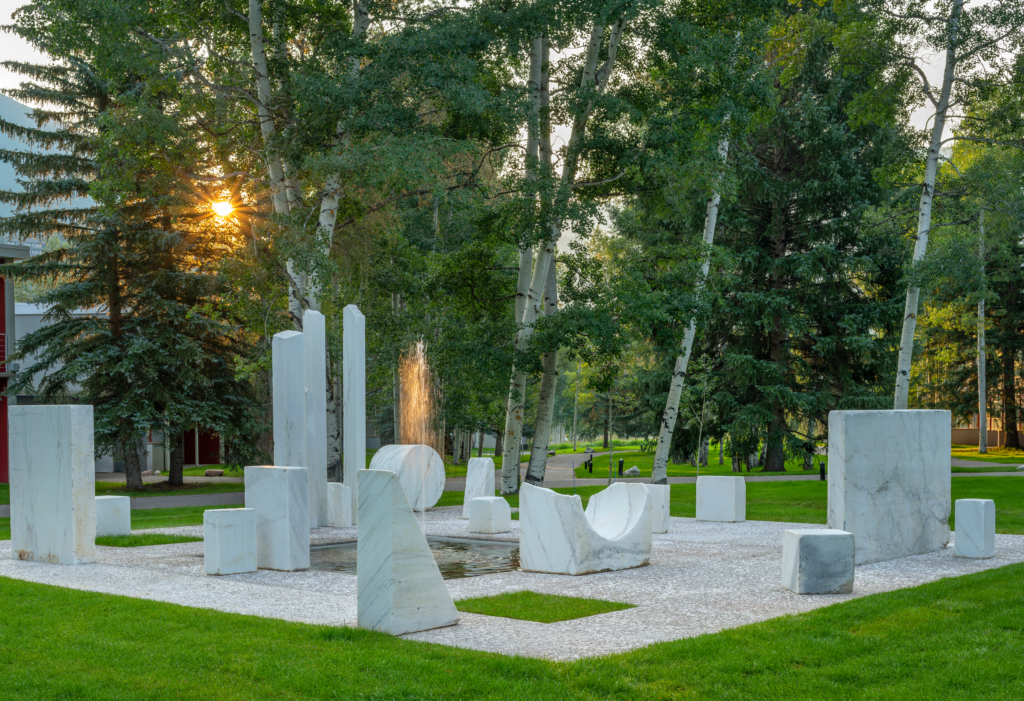
Herbert Bayer's "Marble Garden" (1955), installed at the Aspen Institute's Aspen Meadows campus.
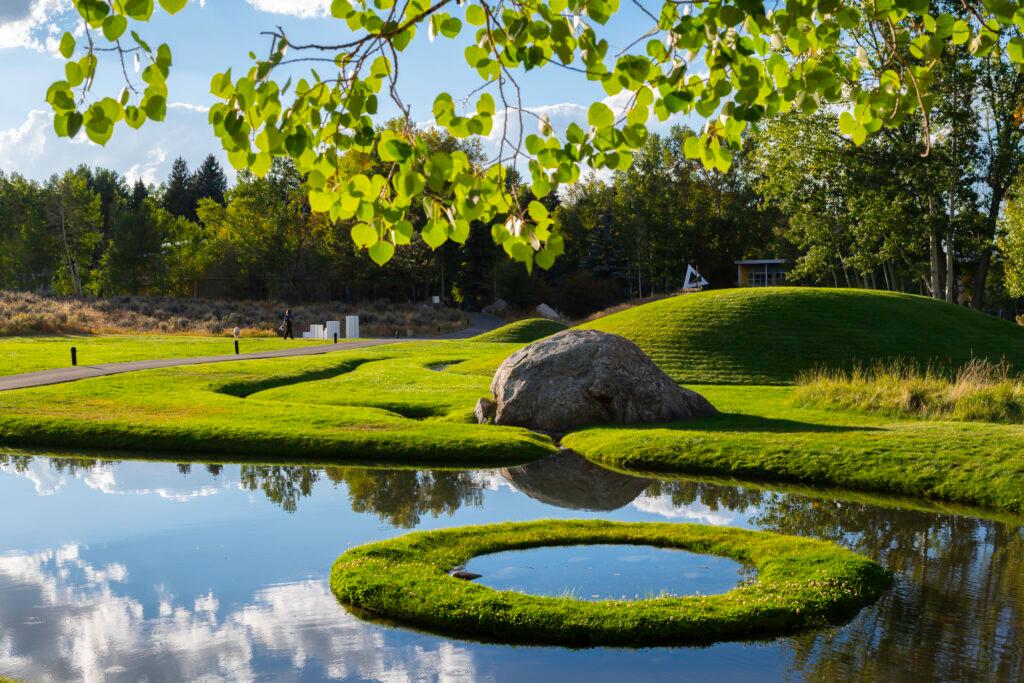
“I really love seeing the preliminary models where he's working out ideas,” Bayer said. “For instance, with ‘Articulated Wall,’ we've got the original ‘Articulated Wall’ model, but we also have some preliminary models where he's sort of playing with the spacing of that and the colors and different things. And it's just really fascinating to see his thinking.”
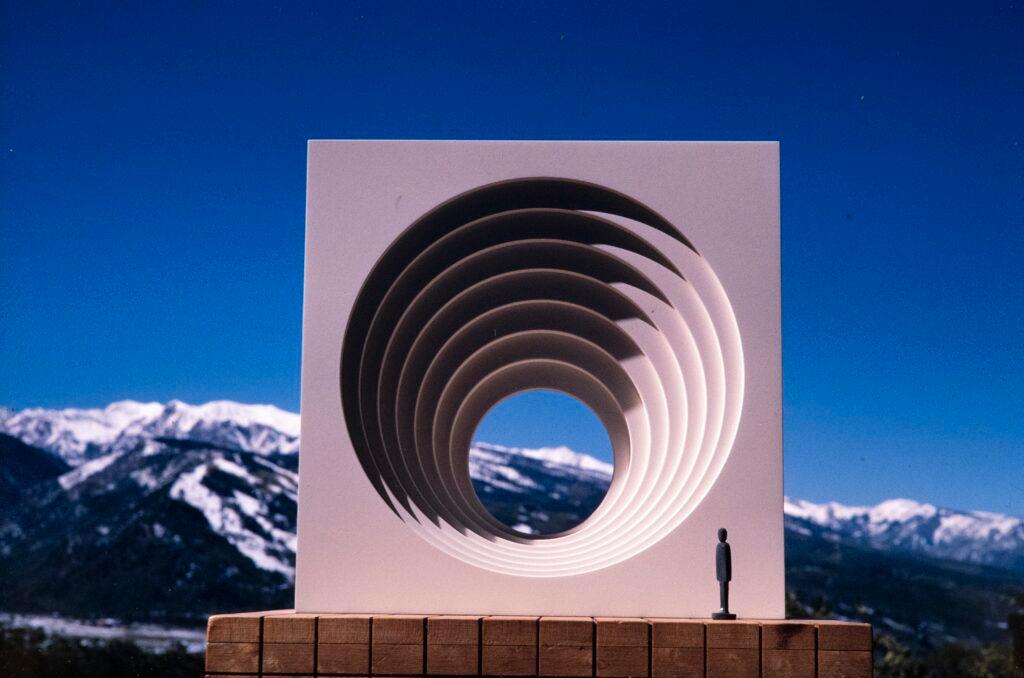
A model of Herbert Bayer's "Gate with Receding Circles" (1970), on view in a new exhibition at the Resnick Center for Herbert Bayer Studies in Aspen. 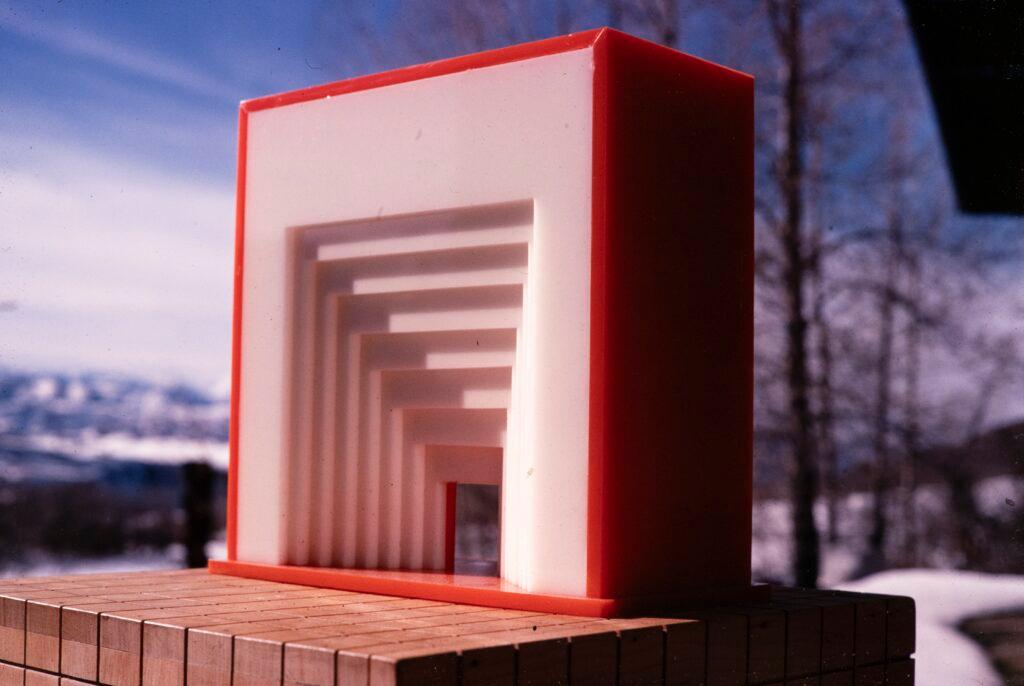
A model of Herbert Bayer's White and Red Gate" (1969), on view in a new exhibition at the Resnick Center for Herbert Bayer Studies in Aspen.
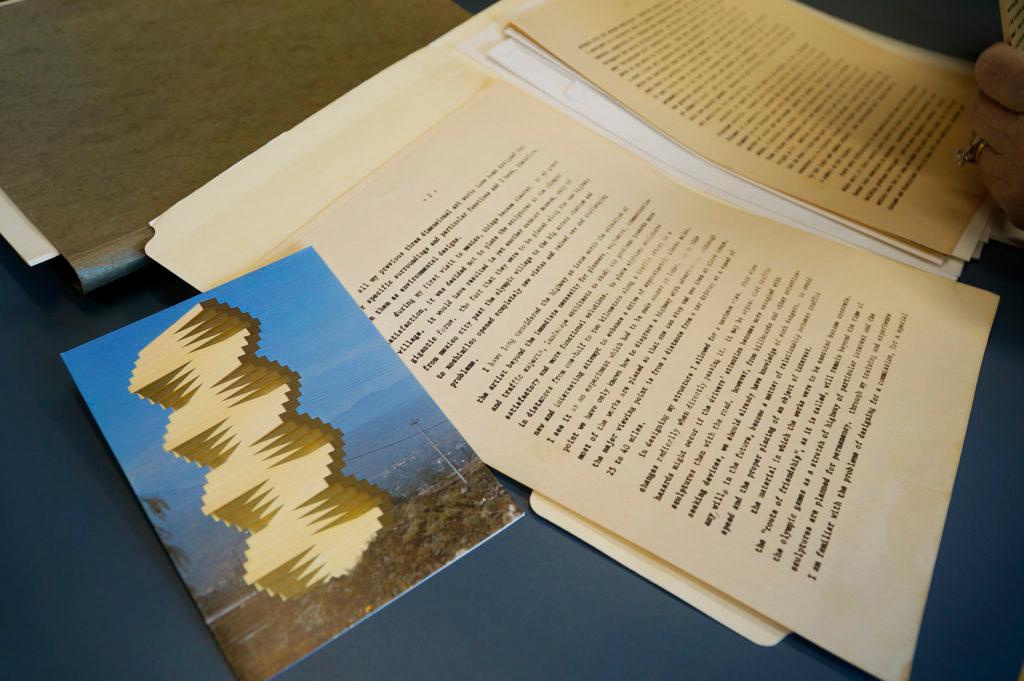
“Sculpting the Environment: The Three-Dimensional Art of Herbert Bayer” brings together more than one hundred works by Bayer, including drawings, paintings, photographs, models, and maquettes. The exhibition runs through April 18, 2026. Museum hours are Tuesday through Sunday, noon to 5 p.m. Admission and guided tours are free of charge.
Things to do in Colorado this weekend
Thursday, June 26
- Three new exhibits at the Museum of Art in Fort Collins — “Beyond Resilience,” a group exhibition by Mona Bozorgi, Odette England, Melissa Grace Kreider, Marcy Palmer, Danielle SeeWalker and Shuyuan Zhou examining the enduring impact of patriarchy; “Angle of Draw,” a photography exhibition by Shawn Bush looking at how power, sustainability, and whiteness intersect in the U.S. through the lens of natural landscapes and propaganda; and an installation of manipulated photographs and memorabilia from artist Justin A. Carney’s late grandmother. All exhibitions are on view through Sept. 14. Admission ranges from $8 to $10 with free admission for guests under 18, students and military.
Friday, June 27
- CPAC's Annual Members Show in Denver — A group show highlighting works from CPAC’s 700-plus members. Free and open to the public, 5 p.m. to 8 p.m.
- Movies at McGregor in Denver — A free, outdoor screening of “A League of Their Own.” Other upcoming screenings in July and August include a double feature of “Top Gun” and “Top Gun: Maverick,” “Wicked,” “Mean Girls” and a double feature of “Shrek” and “Shrek 2.”
Sunday, June 29
- Free day at Clyfford Still Museum in Denver — Visit the museum for free from 10 a.m. to 5 p.m.
- City Park Jazz in Denver — Featuring Buckner Funken Jazz from 6 p.m. to 8 p.m. Free and open to the public.
All weekend
- Colorado Mustang West: Wild Horses, Art & Film in Grand Junction — A new festival combining equine enthusiasts, artists, filmmakers and the general public for four days of connection, education, and entertainment. Events include a BLM Wild Mustang adoption and foster Mustang showcase, the EQUUS International Film Festival, an Art of the Mustang Fair and kids activities. Many events are free and open to the public, tickets required for film screenings and the Mustang symposium.
- Blues from the Top Music Festival in Winter Park — Featuring 13 bands and artists, including JJ Grey & Mofro, Little Feat, Christone "Kingfish" Ingram and more. June 27-29. Day tickets start at $80.41, weekend passes are $201.46. Kids under 12 enter free.
- Boulder Comedy Festival — Five days of live comedy at venues across Boulder, June 25 through 29. Shows are $20 or $30 each.
- “Little Women” in Grand Junction — The classic tale of the four young March sisters, adapted by Marisha Chamberlain from the novel by Louisa May Alcott. On stage June 27 at 7 p.m., June 28 at 2 p.m. and 7 p.m. and June 29 at 2 p.m. Tickets range $22 to $28.
- Denver Pride — The largest Pride event in the Rocky Mountain region, consisting of 3 main events: the festival, a 5K and a parade. Free and open to the public.
- Green Box Arts Festival in Green Mountain Falls — Opening weekend for this multi-week, multi-disciplinary festival including performances, exhibitions, classes, camps, conversations and parties. Ticket prices and event locations vary.
Ongoing in June
- “Clue: A Walking Mystery” in Aspen — An immersive experience where teams track down antique furniture and solve puzzles in local businesses while exploring downtown Aspen to piece together the classic “Clue” mystery of who killed Mr. Boddy, where and with what. Games start at the Wheeler Opera House. Open from June 19 through July 12.
- “The Book Handlers” in Denver — A Buntport Theater comedy about a fictitious company that makes your books look like you read them so you can impress others without having to do any of the reading. The show runs June 13-29. Tickets are available via a name-your-price model.
- “Little Miss Sunshine” in Aurora — A musical comedy based on the Academy Award-winning film at the Aurora Fox Arts Center. Performances take place Fridays and Saturdays at 7:30 p.m. and Sundays at 2 p.m. through June 29. Tickets range from $17 to $42.
- “Young Frankenstein” in Breckenridge — The comedy genius, Mel Brooks, has adapted his beloved comedy film for the stage. At the Breckenridge Backstage Theatre from June 25 through Aug. 10. Tickets range from $35 to $50.
- “New Legacies: Contemporary Art Quilts” in Fort Collins — An exhibition featuring work by the finest national and international contemporary quilt artists. On view through Aug. 22. Free and open to the public.
Some groups mentioned in the Colorado Arts Spotlight may be financial supporters of CPR News. Financial supporters have no editorial influence.
How we pick our events: The Colorado Arts Spotlight highlights events around the state to give readers a sense of the breadth of Colorado’s arts and cultural happenings, it is not — and can not possibly be — a comprehensive list of all weekly events. Entries are not endorsements or reviews. Each week’s list is published on Thursday and is not updated.

